What if Porsche sold minivans?
Even if it was a really top-drawer minivan, it’d be a tough sell – because most Porsche buyers aren’t minivan buyers. Eskimos and ice.
Subaru faces a similar challenge trying to find buyers for its rear-wheel-drive/two-door BRZ coupe.
Subaru people like cars with more than two doors – and the engine’s power going to four wheels.
They also like ground clearance and passenger-carrying room.
The BRZ has not much of either.
Great car – wrong store.
Two wrong stores.
WHAT IT IS
The BRZ is a rear-drive sport coupe jointly developed with Toyota – which had been selling its version (basically the same car) through its Scion small car division as the FR-S.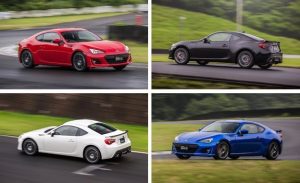
When Scion folded last year, Toyota folded the FR-S into its model lineup as the 86 coupe – and finds itself in the same position as Subaru: Trying to figure out how to sell a type of car that most of its traditional buyers – Corolla/Camry/Prius/Avalon people – don’t get and generally don’t get.
That doesn’t mean either of these cars isn’t desirable. They are, very much so. They’re just fish out of water.
Sales of both the BRZ and its Toyota-badged twin are dead in the water. About 400 a month for Subaru so far this year – which is about half what they were three years ago.
The Toyota-ized version is doing a little better, but not a whole lot.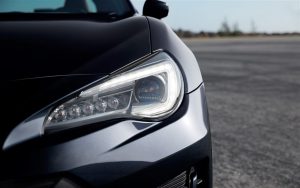
But this is probably good for people who do get it and are interested.
Odds of a good deal are high because dealers – whether Soobie or Toyota – will be grateful for the business.
Prices for the BRZ start at $25,495 for the Premium trim with six-speed manual transmission. The next-up Limited trim – $27,645 – adds luxury amenities such as climate control (rather than manual) AC, suede and leather trim, an upgraded gauge cluster and the option to buy a newly available Performance package that includes upgraded Brembo brake calipers, performance shocks and a more aggressive 17-inch wheel/tire package.
Prices crest at $29,695 for the Series Yellow – also new for 2017. It includes the Performance package along with a unique-to-this trim yellow/black interior palette.
The main cross-shop is the Mazda Miata – which stickers for $24,915 to start, topping out at $34,925 for the new targa-roofed RF variant.
And, of course, the Toyota FR-S, which is mechanically identical – both cars have the same Subaru-sourced engines – and looks almost exactly the same, too.
The 86’s prices start out a little higher – $26,255 – but you can get it with an automatic transmission (if you must) for $26,975 while Subaru restricts that option to the higher-priced Limited trim, which stickers for $28,475 so equipped.
WHAT’S NEW
Both cars get a refreshed exterior and interior plus a 5 more horsepower (for manual-equipped versions) from the Subaru-built 2.0 liter flat-four engine. A hill holder clutch also comes standard in manual-equipped models and all trims get LED headlights.
WHAT’S GOOD
The hard top will never fade and dirtbags can’t break into the car with a knife – unlike the sun-and-dirtbag-vulnerable soft-topped Miata. (The new targa-roofed Miata RF is less vulnerable – but much more expensive.)
It has back seats.
Four people in this car isn’t likely. But three – one of them sitting sideways in back – is doable. Such is not possible in the two-seater Miata.
It is a sports car. Meant for people who know how to drive fast in the curves.
WHAT’S NOT SO GOOD
It may not be around for long.
Only a few thousand have been made so far all told – and if the car gets cancelled next year or the year after, replacement parts – especially trim pieces – may get hard to find soon afterward.
Miatas have been around since the late 1980. Almost 1 million of them have been built so far – with no end to production in sight. It will probably be easy to find any part for a Miata thirty years from now.
The first thing you notice when you raise the BRZ’s hood is that there’s no ugly plastic cover covering everything up.
You can see the engine itself.
Subaru – which makes the engine for both the BRZ (naturally) as well as the “Toyota” 86 – even went the extra mile and applied a racy-looking (and heat-dissipating) red crinkle-coat finish to the 2.0 liter four’s intake tubes. This kind of thing used to be common back when people cared about what was under the hood and were interested in how it looked.
It was a matter of pride to pop the hood and show off what you had. The BRZ is one of the few new cars that gives you that option – and it’s standard.
Not just a neat-looking engine, either.
Though fuel-injected and computer-controlled, the Subaru boxer four produces a magnificent pre-computer moan when you call up all 205 of its available horsepower (five more hp than last year’s version – but only manual versions; if you buy the automatic, you get the same 200 hp rating as last year).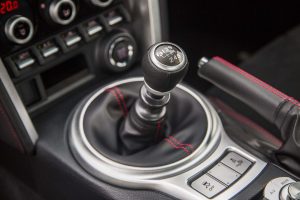
It is an almost Quadrajet moan.
The deep inhaling sound of a four barrel carb’s huge secondaries flopping open, the engine’s vacuum sucking air into the vortex. If you love an engine you can see, you’ll love an engine you can hear, too.
The BRZ’s engine is special in another way, too.
It’s a boxer engine.
The only other sports car that has one of these costs a lot more than $25k-ish to start.
Why care, though?
The boxer engine lays flat in the chassis and that puts its weight low to the ground. The boxer engine also splits its weight evenly across the car’s centerline, half on each side.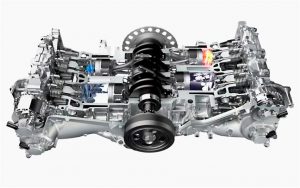
Both are boons to handling.
The BRZ’s engine is also unique to the BRZ (and FR-S). It is the most powerful naturally aspirated (no turbo) engine in Subaru’s inventory.
While other Subarus are powered by a same-size 2.0 liter four, it is not the same 2.0 liter four. The ones without a turbo – like the Impreza’s 2.0 liter four – are milder cammed and make much less horsepower (just 152 for the Impreza’s version).
And the ones with a turbo – like the 2.0 liter engine in the WRX – make much more torque: 258 ft. lbs. vs. 156 for the BRZ. And they make it much, much lower in the powerband: at 2,000 RPM for the turbo’d WRX vs, a screaming 6,400 RPM for the BRZ.
The WRX was born to run . . . but the BRZ was born to rev.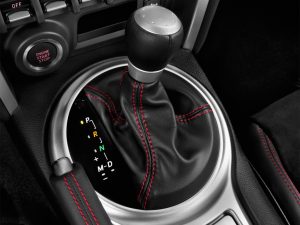
It gets to 60 in about 6.2 seconds with the six-speed manual; automatic versions take a few ticks longer – being disadvantaged by a bit less power (200) and the hi-revving boxer engine’s need to spin to make both power and torque.
With the manual, you can goose the engine with your foot and feather the clutch with your left. With an automatic, all you can do is floor it and wait for the engine to get up into its powerband.
But, if you go with the automatic, you will get noticeably better mileage: 24 city, 33 highway – vs. the manual car’s 21 city, 29 highway.
You’ll also get throttle-blipping/rev-matching downshifts.
ON THE ROAD
The first is that the BRZ is a racier-feeling – and sounding – car than its chief rival, the Miata. Both horsepower and torque peaks happen at significantly higher RPM – at 7,000 and 6,400 RPM, respectively, vs. 6,000 RPM and 4,600 RPM for the Miata’s also-2.0 liter (but inline and not boxer) four.
The Miata, on the other hand, is a much lighter car – 2,332 lbs. vs. 2,793 for the BRZ – and so feels lighter on its feet.
Despite its engine producing less horsepower, the Miata is dead-heat quick as far as 0-60. And because the torque peak of its engine is almost 2,000 RPM lower down – and there’s almost 500 pounds less mass to get moving – the Miata gets moving with less apparent effort. Half throttle will give you the same forward progress as three-quarters throttle in the BRZ.
You’ll find the Miata’s more agreeable in the commuter car role because of this – and it probably accounts for a lot of the car’s success.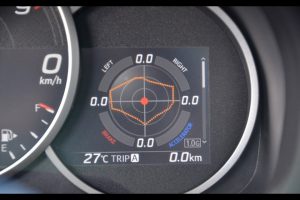
On the other hand, the unfixed Tomcat qualities of the BRZ have their own appeal.
It feels more like a track car made street legal than a street car that is a great track day car (as the Miata is). The BRZ’s 7,400 RPM redline engine begs for daily Italian Tuneups – pedal to the metal, bumping off the rev limiter.
You know, to clear the carbon off the plugs.
It is geared (4.30:1 cogs in the Torsen limited slip diff) such that 70 MPH equals about 3,100 RPM in sixth gear – at steady-state cruise. The engine never feels – or sounds – like it’s taking a siesta.
But don’t misunderstand. The BRZ is not a Subaru version of the old Honda S2000 – which was a screamer up high but had nada down low – making it a track-day car that was terrible on the street.
The BRZ is commuter-car viable and in some ways more so than the Miata because the Subaru does have back seats and that effectively doubles or even triples its Stuff Carrying Capacity vs. the two-seater-only (and tiny trunked) Miata. Take it to work – and stop by the store on the way home. Without having to go by yourself to leave room for a couple bags of groceries.
But the main thing to know about both the BRZ and the Miata is that they are cars for people who like to drive fast in the curves. These are not blunderbuss big-engined muscle cars built mainly to show off how quickly they can burn through the quarter mile. They are sports cars – built for heeling over at top speed, pirouetting around the cones of an autocross course.
New strut tower bracing, a larger diameter rear stabilizer bar and revised shock damping enhance this athleticism.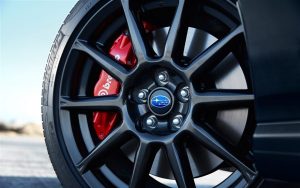
The optional Brembo brakes (four piston calipers up front) are worth the cost of the Performance package all by themselves. Zero fade even when worked mercilessly on mountain switchbacks and consistent, positive pedal feel.
In Track mode – new for 2017 – the stability/traction control fade away to nothing and you can make full use of the car’s abilities, including tail-out drifting through the sweepers.
And there is a pull-up emergency brake . . . no bootleg-turn-useless electronic parking brake.
Both the BRZ/FR-S and the Miata have relatively small wheel and tire packages – 17s for the BRZ/F-RS – and this gives lighter steering feel and quick response to inputs, even if the maximum grip threshold is a bit less than it would be if the car were fitted with the now-typical 19 and 20-inch streamrollers that most performance cars have.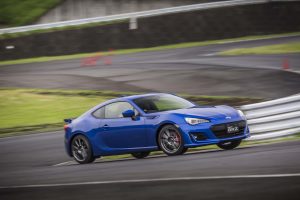
But remember: These two (three, if you include the FR-S) are sports cars – and that is a different thing entirely.
They are modern Spitfires, latter-day MGs. If you like them, you’ll love these.
Either one.
Or either three.
AT THE CURB
Both the BRZ and the FR-S are hardtops – and have back seats. The Miata has a soft top (non RF models) and no back seats (all models).
If you don’t like convertibles – and like the idea of being able to carry at least two passengers – the BRZ (and FR-S) have the advantage.
But don’t imagine you’ll carry three passengers in the BRZ, this “two-plus-two” business notwithstanding. There is literally no leg room – and hardly any daylight – between the backs of the driver and and front seat passenger buckets and the rearseat cushions. The only way anyone who isn’t legless can sit back there is to sit sideways – and that means two-plus-one.
But it’s one more than the Miata.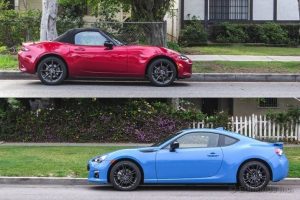
Which is also the smaller car overall – 154.1 inches long vs. 166.7 for the Twins. That’s a solid foot and change. It allows for the BRZ’s back seats – and larger trunk (6.9 cubic feet vs. a hilarious 4.6 for the Miata; some gloveboxes are larger). But on the other hand the Miata’s got the drop on the BRZ and FR-S when it comes to slipping into really tight spots.
And not just parking spots.
Being a foot less long means being able to make use of tighter gaps in traffic. Both cars are excellent tools for playing Frogger – but the Miata is better suited by dint of being the more compact of the two.
In addition to the handsome exterior tweaks – new nose clip with standard (all trims) LED headlights and a standard aluminum rear spoiler – the interior has been classed up with nicer materials (including stitched/fitted leather dash pieces) and – in Limited and Series Yellow versions – an upgraded gauge cluster with a 4.2 inch LCD display to the right of the tach. It shows G forces, lap time, pedal position, steering angle, braking force applied – as well as a digital voltmeter/oil-and-water-temp bar graph readout.
In addition to having back seats, you can fold the BRZ’s back seats forward – creating a large pass-through to the trunk area and room enough to carry four spare wheels plus a helmet and other such track day necessities.
The Miata needs a chase car (or chase SUV).
One thing the BRZ hasn’t got is a bevy of electronic saaaaaaaaaaaaaaaaaaaaaafety nags. Just the seat belt buzzer, if you can imagine that. And traction/stability control that you can easily turn off by pushing a button. That’s it. No dinging/flashing ensemble of Lane Keep Assist/Steering Assist/Automated Braking/Park Assisting/Blind Spot Detecting/EyeSight idiot-proofing that afflicts other Subaru models.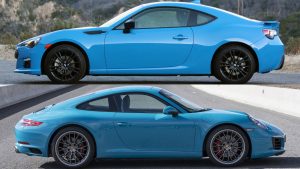
The BRZ assumes you know how to drive (as does the Miata). Unfortunately, cars like these are going the way of big four barrel carbs and lawn darts.
If you want one, better hurry.
THE BOTTOM LINE
If the BRZ (and FR-S) were being sold through Porsche stores, they’d probably be selling a lot more than few hundred of them a month.
If you like what you’ve found here, please consider supporting EPautos. (Latest radio guest appearance can be heard here.)
We depend on you to keep the wheels turning!
Our donate button is here.
If you prefer not to use PayPal, our mailing address is:
EPautos
721 Hummingbird Lane SE
Copper Hill, VA 24079
PS: EPautos stickers are free to those who send in $20 or more to support the site. 


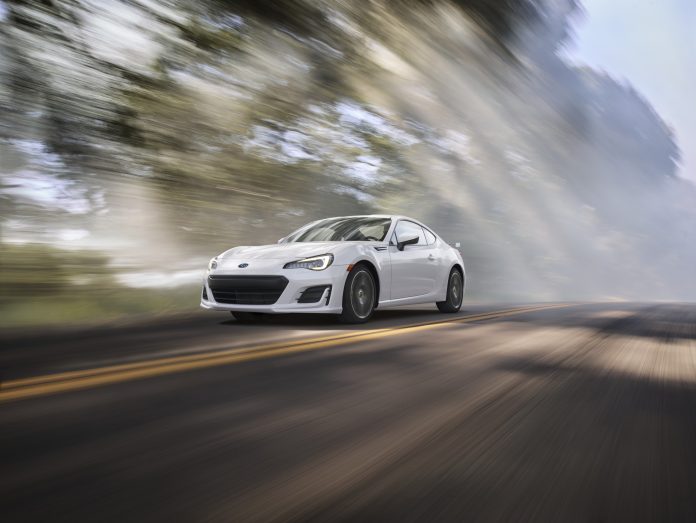


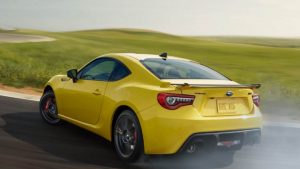

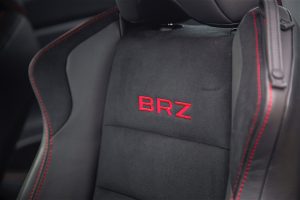





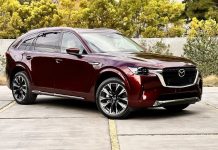
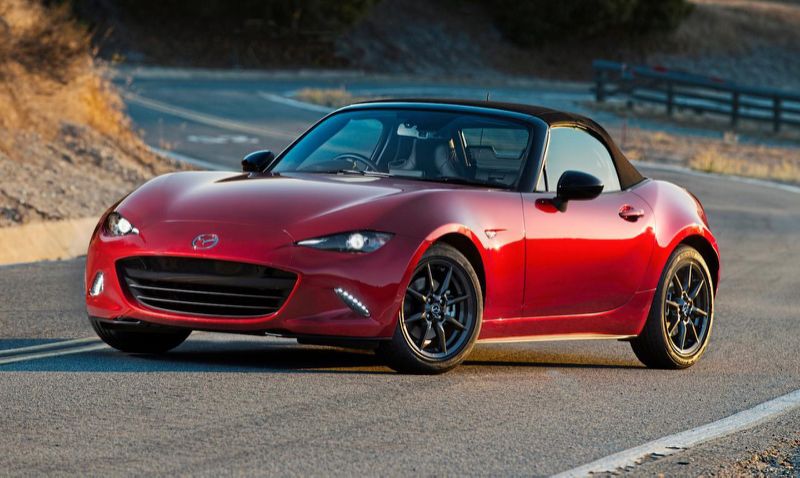
I was thinking of getting a custom ordered JL 2dr later this year, think I’ll get a Saaaaaaafety free BRZ limited with stick instead, as I already got a ’19 Rebel
Agree. If the Miata reminds me of the MGA/MGB, then the BRZ reminds me of the old Datsun 240Z, or the Porsche 924.
If it were being sold by either Nissan or Porsche as an entry level sports car, it would surely do quite well.
Subaru did it to themselves. I literally was ready to purchase one last year, but I would have had to travel out of state hundreds of miles just to get the one I wanted. But I needed a car right away due to blown head gasket.
These are very popular in Silicon Valley with the ‘tuner’ crowd, several of my co-workers have one. Fun cars 😉
Hi Scarecrow!
I dig it – more so than the Miata (mainly because I don’t dig convertibles) but also because I like that the BRZ is more raw, a fiercer car.
The thing begs to be drifted and parking brake 180’d.. 🙂
Something about this car appeals to me. Maybe it’s the slammed down Boxster look and the sleeper look too.
I could see having a ball with it….and that’s high praise from an guy who has his best fun, most of the time, with something that’s steerable with the throttle.
Took two of my apprentices for a ride in it… they seemed impressed with its abilities!
Ya know, it kinda looks like a mini-Porshe, a 911 or 956 w/out the rear wing. Inspected one the other day. Hard to get out of, kinda fall in as well. Not really anything like the regular Subaru crowd would go for, apparently. Getting the door open is easier than the Miata, which reminds me of the awful Spitfire inside. I don’t like looking up at other people’s hubcaps. I’m a small person. 5’6″, 130 lbs, and I feel a little close in a Miata. Oddly enough, most of my Miata customer are on the taller side of 6 feet, I don’t know how they do it!
I’m not big on MGs and totally despise the Spitfire. Although I did dig the ’73 Opel GT mini-vette, and the ’62 Renault Caravelle with the removable hard bubble-top roof! Ok, I’m a beatnik, no I’m a dinosaur.
Hi Graves,
My 6ft 3, 200 pound carcass fits inside pretty comfortably. The back seats are, of course, absurd. But you can carry a third person back there… sideways!